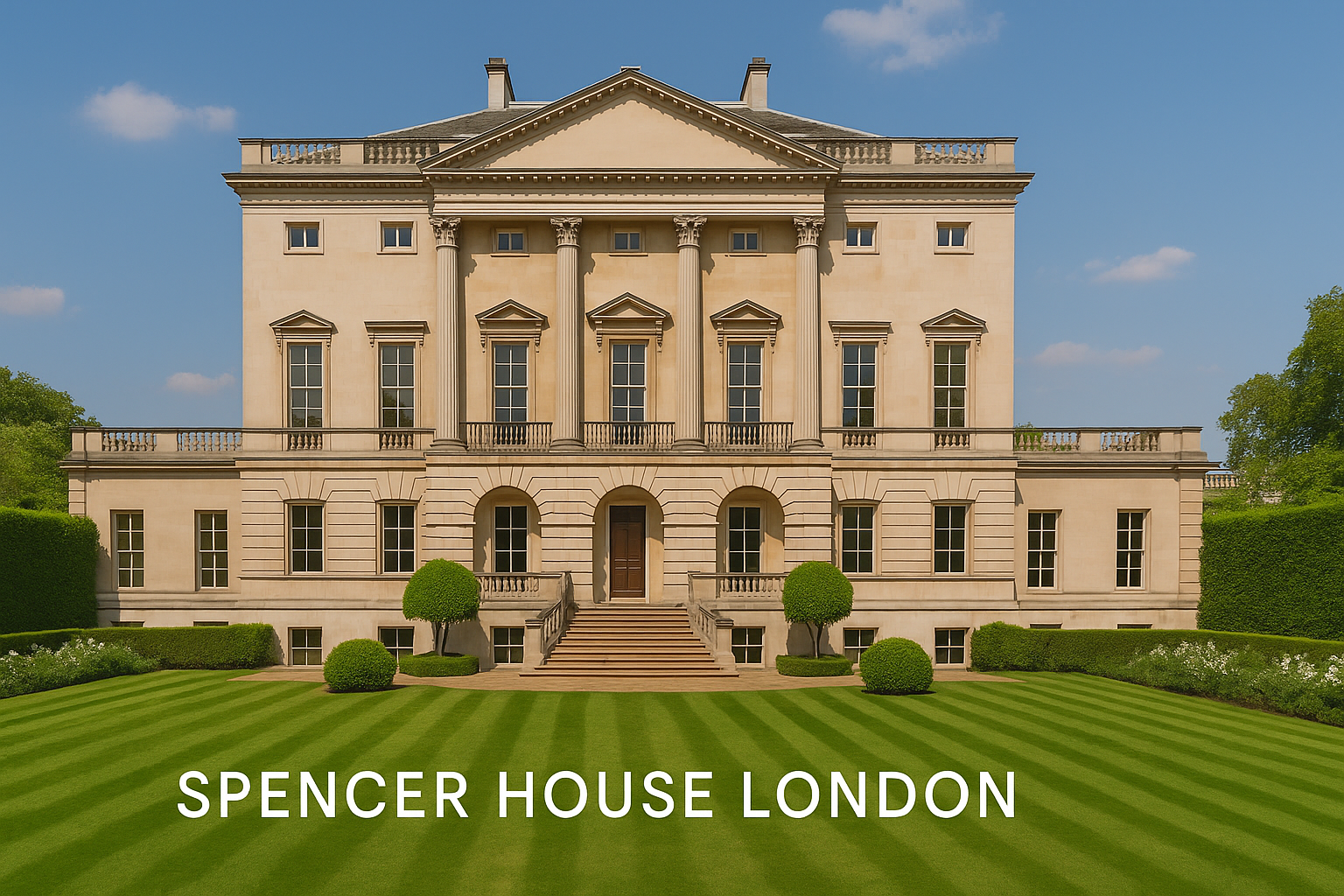Spencer House stands in the heart of London. It faces Green Park and shines with grand design and deep heritage. This mansion tells a story that ties closely to British nobility. It does not just hold furniture or artwork. It holds a piece of the past.
The house began in the 18th century. John Spencer, the first Earl Spencer, wanted a place that showed his status. He chose one of the best architects of the time. That man was John Vardy. Later, James “Athenian” Stuart finished the interiors. Each room reflected taste, wealth, and power.
Many people walk past this house without knowing its worth. Its beauty does not scream. It speaks softly with stone columns, carved ceilings, and quiet strength. It is not a public museum. It is a private space that opens only on select days. Those who visit, walk into history.
Design That Set a Standard
The house became a model for others in its time. Spencer House used early neoclassical style before it became common. Its columns and symmetry followed ancient Greek ideals. This was rare in England when it was built.
Inside, each room tells a different story. Some rooms show Roman touches. Others reflect Greek charm. The Palm Room stands out with gold trim and pale tones. The Great Room rises with a tall ceiling and brings light into the heart of the home. Every piece fits with care. Nothing feels rushed or random.
Architects studied this house for years. They saw how each wall and window added balance. They learned how space could show both art and order. Even today, interior designers look back at Spencer House for ideas.
A Legacy of the Spencer Family
This house does not just carry bricks and beams. It carries the Spencer name. The same family that gave birth to Princess Diana once lived here. Their history runs deep in British life. From politics to royal ties, they shaped the country in quiet but strong ways.
Over the years, the house saw many changes. It passed through generations. Some used it as a main home. Others kept it as a symbol. During hard times, it served other purposes. In World War II, offices took over the rooms. The grandeur faded for a while.
But the core never broke. Even when its shine dulled, the house stood tall. It reminded London of its roots. People respected its form and what it meant.
Restoration and Modern Use
In the late 20th century, Spencer House needed care. Years of wear had taken a toll. A private firm stepped in. They did not rebuild. They restored. Their goal was not to add modern flair. They aimed to bring back the original beauty.
Experts spent years on research. They studied old drawings. They tested paint samples. Craftsme matched each design with care. They carved wood by hand. They used gold leaf like the old days. Step by step, the house found its past again.
Now, the house looks close to how it did in the 18th century. It holds events, dinners, and private tours. Some parts host offices. But its soul remains. It feels like stepping into another time.
Hidden Rooms and Silent Stories
Not every part of Spencer House meets the eye. Some spaces hide secrets. Narrow halls link rooms that never show up on maps. Old servants’ stairs still echo with soft steps. Whispers of past visitors stay in the corners.
Rumors tell of deals made in quiet studies. Tales hint at stolen kisses during grand balls. Staff knew things that never reached-public ears. The house holds more than facts. It holds moods.
Paintings stare from walls as if they remember. Chandeliers sway slightly in still air. Some say you feel a presence when alone. Whether true or not, the house makes you stop and think.
A Connection to Royal Blood
Princess Diana’s link to Spencer House draws many. She grew up in the family’s estate at Althorp. But the roots reach back to this London gem. People visit to feel closer to her story.
Many wonder what she saw in the halls. Some rooms carry portraits of her ancestors. The walls hold family pride. Diana’s grace mirrors the house’s beauty. Both gave a soft, strong presence to the world.
Today, fans and tourists ask about her ties. Guides explain with care. They do not sell gossip. They offer truth wrapped in respect. The house honors her legacy without turning it into a stage.
A Private Place with Public Meaning
Though not a full-time museum, Spencer House opens for guided visits. This keeps it exclusive but reachable. Visitors must book in advance. The tours feel calm and respectful. You do not rush through. You walk and feel.
The house teaches without shouting. It shows art, architecture, and history as one piece. Schools, historians, and travelers all gain from a visit. Each tour brings new eyes and fresh thoughts.
Some come for royal ties. Others come for design. Many leave with a deeper sense of time. Few places offer that. Spencer House gives more than photos. It gives memory.
Conclusion
Spencer House does not try to match modern trends. It does not chase loud fame. It stands firm in quiet glory. Its beauty does not fade with time. It deepens.
The house holds more than bricks and gold. It holds voices, dreams, and the shape of a noble past. It does not shout its story. It lets you lean in and listen.
In a city full of noise, Spencer House whispers. That whisper carries power. Visitors feel it in every hall and every breath of air. London grows fast, but this house stays steady. It reminds the city where it came from.
To walk through Spencer House is to step through time. And time, in this place, does not hurry. It waits, holds, and speaks in silence.
Want to add style or comfort to your own space? Visit Wutawhacks Home Hacks: Smart Tips for a Better Home for easy ideas anyone can try.




